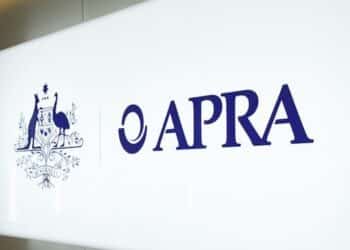On 25 September 2024, the Australian Taxation Office (ATO) released its final determination (TD 2024/7), updating its position on the tax deductibility of financial advice fees, which had been unchanged since 1995.
In accordance with the ATO’s determination, under section 8-1 of the Income Tax Assessment Act, upfront fees are not tax deductible, however, under section 25-5, they are to the extent that they relate to tax advice and provided by Qualified Tax Relevant Providers (QTRP).
On Monday, the Financial Advice Association Australia (FAAA) released its guide for financial advisers and accountants to explain how the professions can work together to claim a tax deduction for clients’ financial advice fees.
Developed in consultation with Chartered Accountants Australia and New Zealand (CA ANZ), CPA Australia, and the Institute of Public Accountants (IPA), the guidance aims to provide insight into how TD 2024/7 can be practically implemented.
One of the key considerations for advisers is not just determining what proportion of their advice is tax deductible, but also the method that they utilise to make the determination.
“Ultimately, apportionment is about having a fair and reasonable basis for the proportion of a financial advice fee the client may claim as a tax deduction,” the FAAA guidance explained.
Detailing three possible methods for calculating the apportionment – activity basis, strategy basis, and insurance premium basis – the guide noted that it is not an “exhaustive list of the possible methods”.
“Financial advisers should use an apportionment basis that is fair and reasonable and suits the circumstances of the individual case,” the FAAA said.
“The method chosen will often be based on how the overall financial advice fee was determined to begin with.
“For example, those financial advisers who keep accurate timekeeping records (including the nature of work completed) may be inclined to choose the activity basis to determine the appropriate apportionment.
“Other financial advisers may find it more practical to use the strategy basis where their fee is based on the complexity and value added by the strategies recommended. Similarly, other financial advisers may find it more practical to use the insurance premium basis.”
Activity basis
The activity basis method, essentially, relies on breaking down the fees based on the time spent on tax (financial) advice, as well products and strategies producing assessable income.
“Financial advisers may have accurate records of their timekeeping via a customer relationship management or accounting system, with specificity regarding the breakdown of the work completed for each client,” the FAAA said.
“This data could be used to provide an estimate of the time spent for a specific client on s 25-5 (managing the client’s tax affairs) activities, s 8-1 (gaining and producing assessable income) activities and non-tax related work for that client.”
If an adviser charges their client on an itemised hourly rate, they need to ensure their records are “accurate, contemporaneous and robust”, and consider that some time-based activities that may not be included in a financial advice document could still be tax-related, “such as investigating tax implications of alternative strategies”.
“The relevant portion of a fee for these activities can be treated as deductible,” it added.
Strategy basis
The strategy basis method, the FAAA explained, requires advisers to apply a financial advice fee to the financial advice strategies and work out which of those strategies are tax-related and at what proportion.
Essentially, it is allocating the initial advice fees by “linking the fees back to the actual strategies recommended to the client”.
“This approach relies (at least to some extent) on the financial adviser’s professional judgement,” the FAAA said.
The method recognises there will be strategies that are solely tax-related, partially tax-related, not tax-related, related to producing assessable income for the individual, and strategies that are not related to producing assessable income for the individual.
Importantly, it is “likely to be applicable in a wide range of scenarios”.
Insurance premium basis
The ATO’s final determination confirms that the proportion of an initial fee attributable to income protection is deductible under s 8-1, while life/TPD/trauma cover will be deductible under s 25-5 to the extent that the fee relates to tax (financial) advice.
As such, this approach involves apportioning the initial advice fee based on the total year one premium breakdown.
“A financial adviser will generally be able to identify (via the insurance quote) what amount of the first year total premium is attributable to income protection, life, total and permanent disablement and trauma cover,” the guidance said.
“This premium breakdown may be used as a basis to apportion an initial insurance advice fee. This method may be appropriate when providing insurance advice and charging an initial advice fee.”
Ultimately, the FAAA stated, financial advisers themselves are best placed to make the determination around which method they should use and will be a “matter of professional judgement”.
“However, financial advisers should take a commercial approach and consider the advantages, costs and limitations of the various apportionment methods,” the guidance said.
It added: “Depending on the circumstances, certain methods of apportionment may result in a higher deductible portion for the client than others. However, financial advisers should use the method that is most appropriate, and this may be different from the method that produces the best tax result.”




For most of my clients, the additional fees I would have to charge them for all the extra work and overhead to comply with this complex process, would far outweigh any tax savings they would get.
Even chatgpt can’t make sense of this
This is helpful
Yep. Clear as mud.
Ask Homer Simpson to formulate…!